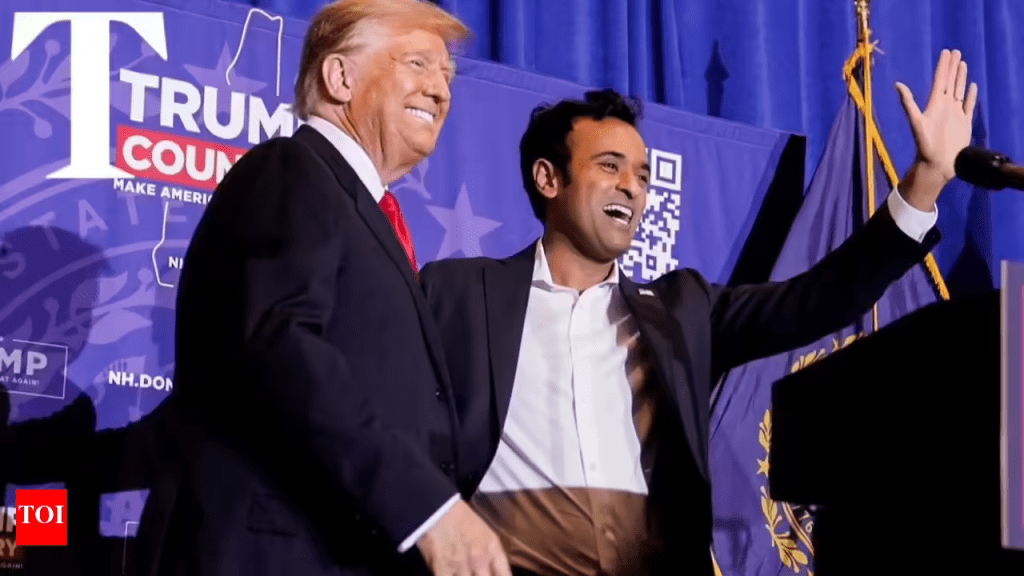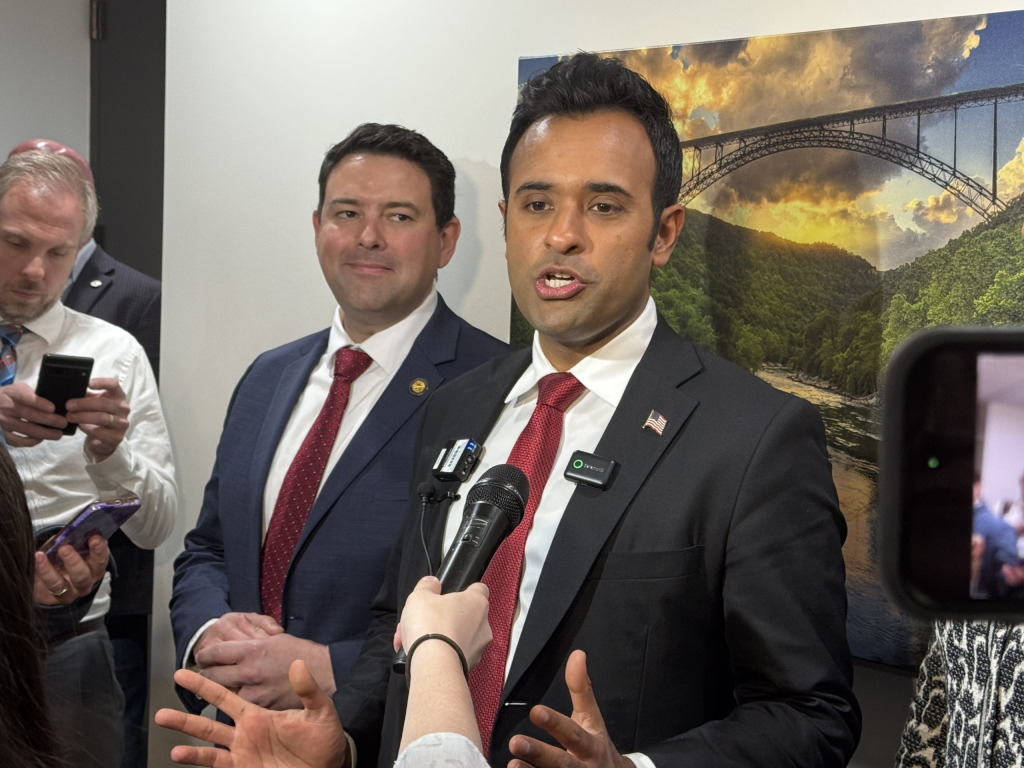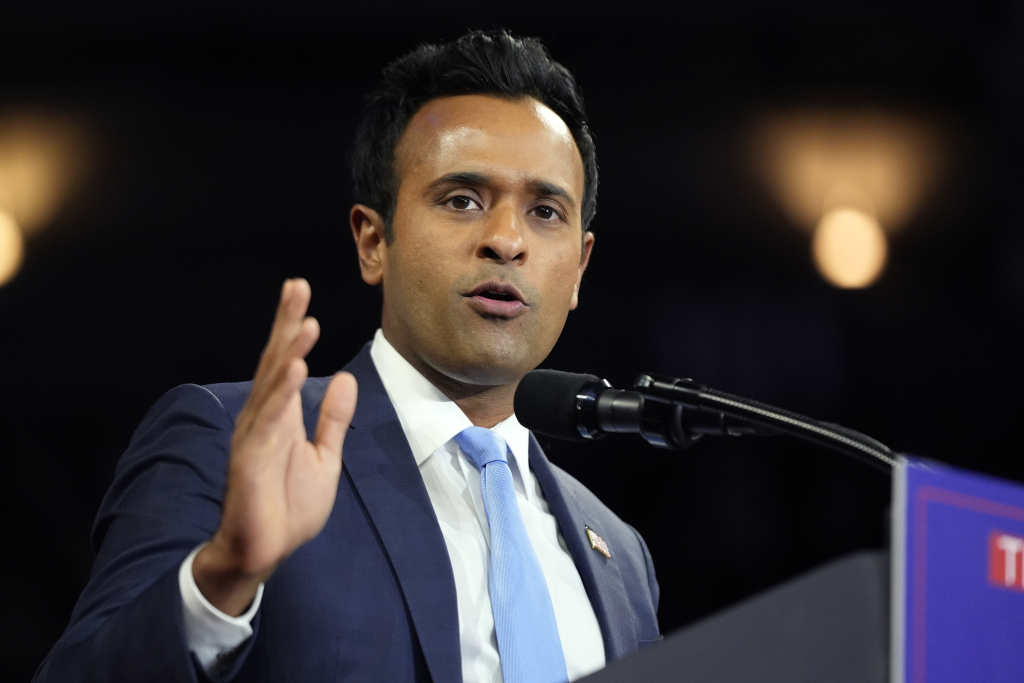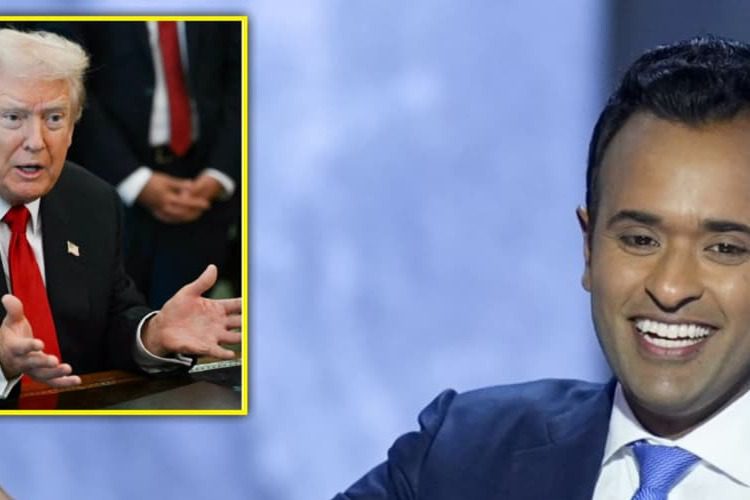President Trump Endorses Vivek Ramaswamy for Ohio Governor: “Young, Strong, Smart… He Will Never Let You Down”
The moment arrived swiftly yet with undeniable weight: Donald Trump took to his Truth Social platform on November 8, 2025 and declared his complete and total support for Vivek Ramaswamy in the upcoming 2026 gubernatorial race in Ohio. “Vivek Ramaswamy is running for Governor of the Great State of Ohio, a place I love and won big, THREE TIMES, in 2016, 2020, and 2024!” Trump wrote, before adding: “I know Vivek well, competed against him, and he is something SPECIAL. He is Young, Strong, and Smart! … Vivek will be a GREAT Governor of Ohio, and has my Complete and Total Endorsement — HE WILL NEVER LET YOU DOWN!”
This is no casual nod of approval. It comes at a pivotal moment for the Republican Party in Ohio, a state viewed as both emblematic of the heartland and strategically vital for the 2026 election landscape. The endorsement amplifies Ramaswamy’s campaign, reinforces Trump’s enduring influence within the party, and raises complex questions about identity, ambition, and intra‐party strategy in the conservative base.

Vivek Ramaswamy, born in Cincinnati in 1985 to Indian-immigrant parents, built a profile that is unusual in American politics. He graduated from Harvard University with a bachelor’s in biology and later earned a law degree from Yale University. He founded the biotech company Roivant Sciences and served as its CEO until 2021.In 2023 he launched a campaign for the 2024 Republican presidential nomination, ultimately suspending his effort and endorsing Trump — an unusual path, but one that led to a close alliance between the two men.
Ramaswamy’s Ohio campaign began in earnest earlier this year. He filed for the gubernatorial race and officially launched his candidacy on February 24, 2025. By May, he had secured the endorsement of the Ohio Republican Party with a historic 60-3 vote — a year ahead of the primary — and his rivals found their paths blocked.
That endorsement set the tone: this would not be an ordinary statewide campaign, but one shaped by early power plays and national stakes.

When Trump weighed in on November 8, he used language rarely reserved for others: the campaign priorities he laid out for Ramaswamy echoed key elements of the Trump agenda — “grow the economy, cut taxes and regulations, promote Made in the U.S.A., champion American energy dominance, keep our now very secure border secure, stop migrant crime, strengthen our military/veterans, ensure LAW AND ORDER, advance election integrity, and protect our always under siege Second Amendment.” In one sense, this endorsement signals that Trump views Ramaswamy not merely as a loyalist, but as a standard-bearer for the next stage of the MAGA movement in state politics.
For Ramaswamy, this is the endorsement that could propel him into the national spotlight — and position him as a generational figure within the Republican Party. At just 40 years old, his youth is one of the factors Trump emphasized; the message: fresh blood with the same heavy conservative pitch. Ohio, too, becomes a proving ground: if he can carry the Buckeye State with Trump’s backing, it sends a message beyond state borders.
But to say the endorsement is uncontroversial would be to miss the nuance. Within MAGA circles and broader Republican ranks, some unease persists. The fact that Ramaswamy is of Indian origin, his previous comments on American work-ethic and identity politics, and his relative lack of deep roots in Ohio state governance have prompted questions. One article cited that “some MAGA supporters have expressed frustration with Ramaswamy after recent Republican losses… Critics accused Ramaswamy of turning away GOP voters after he said the party must ‘shun identity politics if they don’t want to lose voters.’”
Such criticism highlights the balancing act ahead. On one hand, Trump and his allies are clearly rolling out a candidate they believe can win big — on the other, they risk alienating elements of the party that care deeply about authenticity, evangelical credentials, and traditional conservative identity markers. Ramaswamy’s success may depend on his ability to burnish his conservative credentials and bridge any perceived gaps in experience.

From a narrative standpoint, the endorsement marks a moment of alignment and transition. Trump is no longer merely the former president backing candidates from afar — he is acting as kingmaker not only in presidential contests but in key gubernatorial races. The Ohio endorsement signals that state offices are part of the larger strategic chessboard for 2026 and beyond. It reflects a vision of governance rooted in disruption, outsider credentials, technological bravado (given Ramaswamy’s biotech background), and populist appeals to manufacturing and energy dominance.
For Ohio voters, the ride ahead promises to be energetic. The incumbent, Mike DeWine, is term-limited, creating an open field. The Democratic side has its declared candidates (such as Amy Acton, a former state health director) and the general election is poised to draw heavy national attention, as the state remains a swing point in many eyes. With Ramaswamy now firmly backed by Trump, the dynamics shift. Analysts had already noted the importance of consolidating early endorsements and fundraising, and now the national spotlight is fixed on what was once a more localized contest.
Ramaswamy himself responded promptly to the endorsement, thanking Trump and declaring: “Let’s make Ohio greater than ever.” That tone — of gratitude, urgency, ambition — captures the moment: a young candidate buoyed by a former president’s approval, stepping into the spotlight with a large set of expectations and equally large potential rewards.

For voters and observers alike, key questions now loom large. Will Trump’s endorsement translate into broad support among Ohio Republicans — especially those skeptical of Ramaswamy’s outsider status? Can Ramaswamy convert that endorsement into grassroots strength across the state’s suburban and rural voters alike? How will he address concerns about experience, identity, and message resonance? And from the broader GOP perspective, will this move galvanize unity behind the Trump wing or deepen fissures with moderates?
It’s also worth noting the broader implications. If Ramaswamy wins with Trump’s backing, it helps reinforce the notion that gubernatorial offices are the next frontier for the former president’s influence. It may also boost Ramaswamy’s national profile, positioning him as a future figure in Republican politics beyond Ohio. The alignment may usher in a new cycle of career-politicians built from business and technology backgrounds, aligned with populist conservative messaging.
Yet every campaign brings risk. The very same profile that makes Ramaswamy appealing to some — his outsider credentials, his focus on innovation and deregulation — may alienate traditionalists within the party who prize years of state-level experience, grassroots connections, and ideological purity. The endorsement may overlay expectations so large that any misstep could be magnified. Ohio’s electorate, diverse and dynamic, has shown willingness to swing; the Democratic and independent vote blocs cannot be ignored.
In the final analysis, what unfolds in the coming months will shape both Ohio’s political landscape and the national narrative of the GOP’s future. This endorsement cements a clear alignment: Trump’s brand of populist conservatism and Ramaswamy’s ambitious, technocrat-outlier style. For supporters, it represents an injection of confidence, energy, and a bold vision. For skeptics, it raises alarms about centralization of influence, candidate credentials, and whether the party is prioritizing loyalty over depth.
What remains undeniable is that the Ohio race has been elevated. It is no longer just a state election; it is a test case for the next generation of Republican governance, for the durability of Trump’s sway, and for the capacity of a young Indian-American entrepreneur to convert national backing into state-wide victory. In political seasons defined by change, this moment stands out: presidential endorsement, youthful ambition, conservative resurgence, and a battleground state ready to cast a verdict.
As Ohio prepares to cast its decision in 2026, the world will be watching. Will Vivek Ramaswamy live up to the “something special” label bestowed by Donald Trump? Will his campaign deliver on the promise of economic growth, tax cuts, energy dominance, secured borders, and constitutional protections? And will the endorsement prove the launching pad the architects expect — or become a cautionary tale of how high expectations can become heavy burdens?
The answer will unfold one campaign trail stop at a time. But for now, the message is clear: Donald Trump believes Ohio’s next chapter is being written — and he’s put his full weight behind Vivek Ramaswamy to write it.


